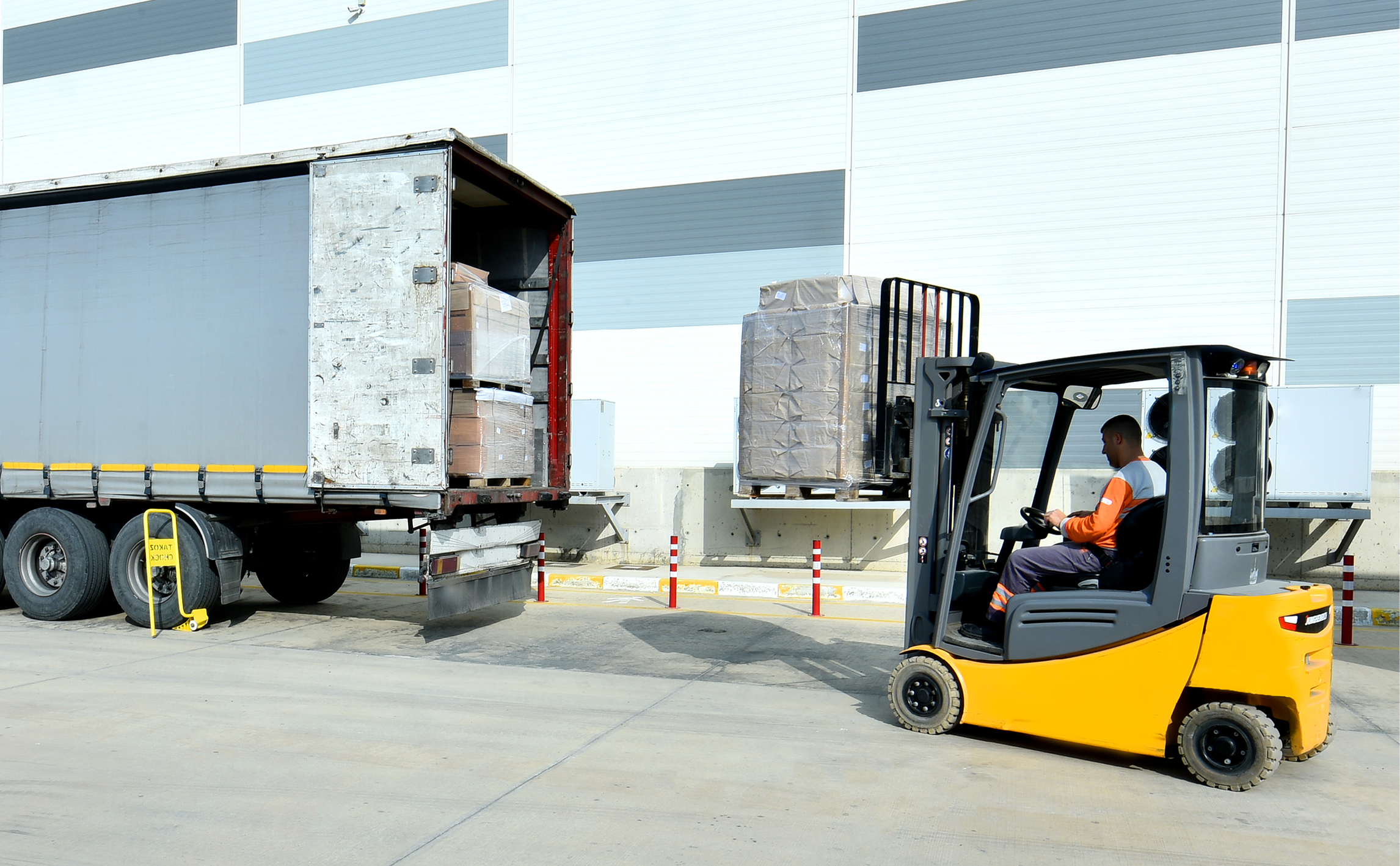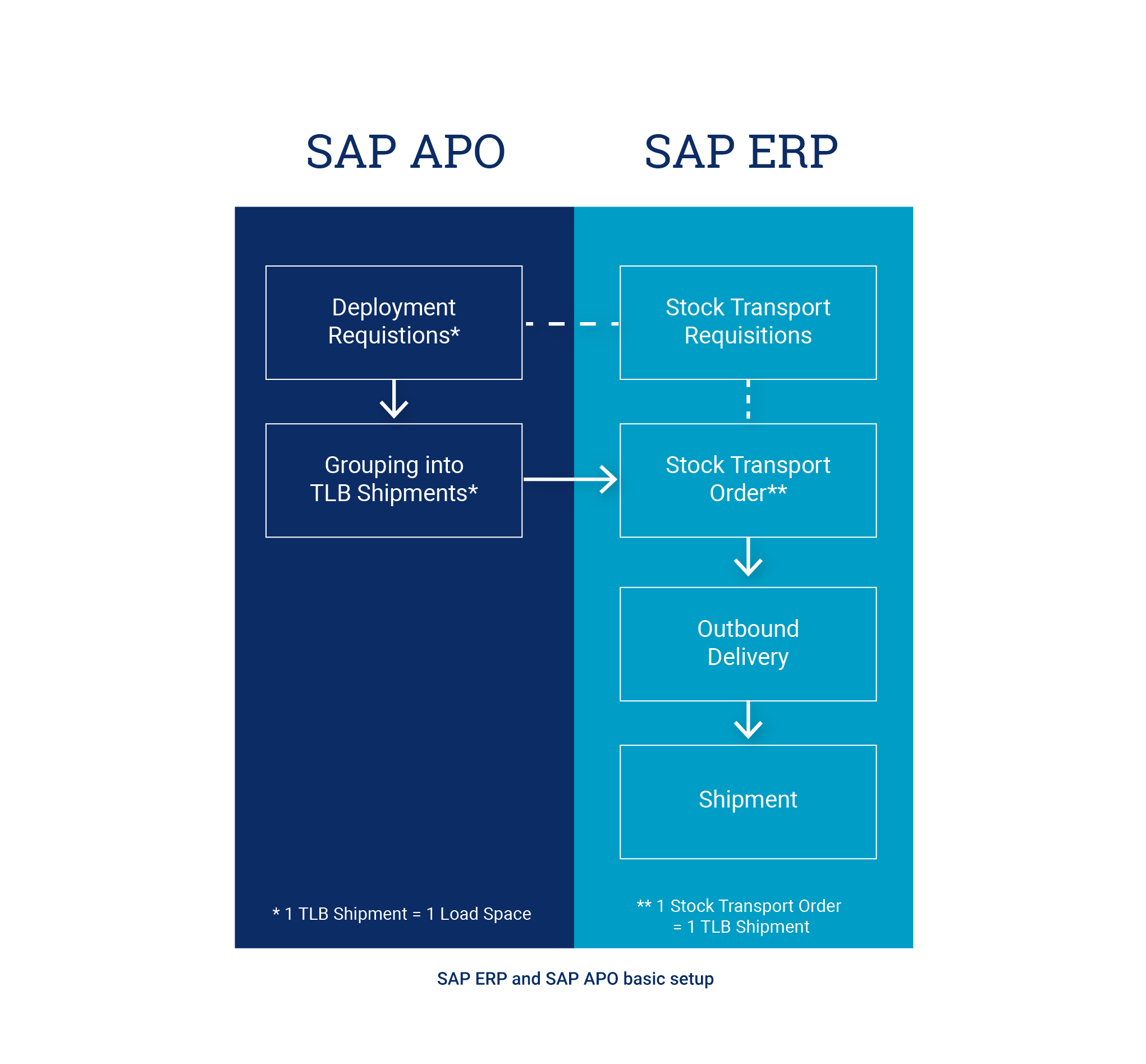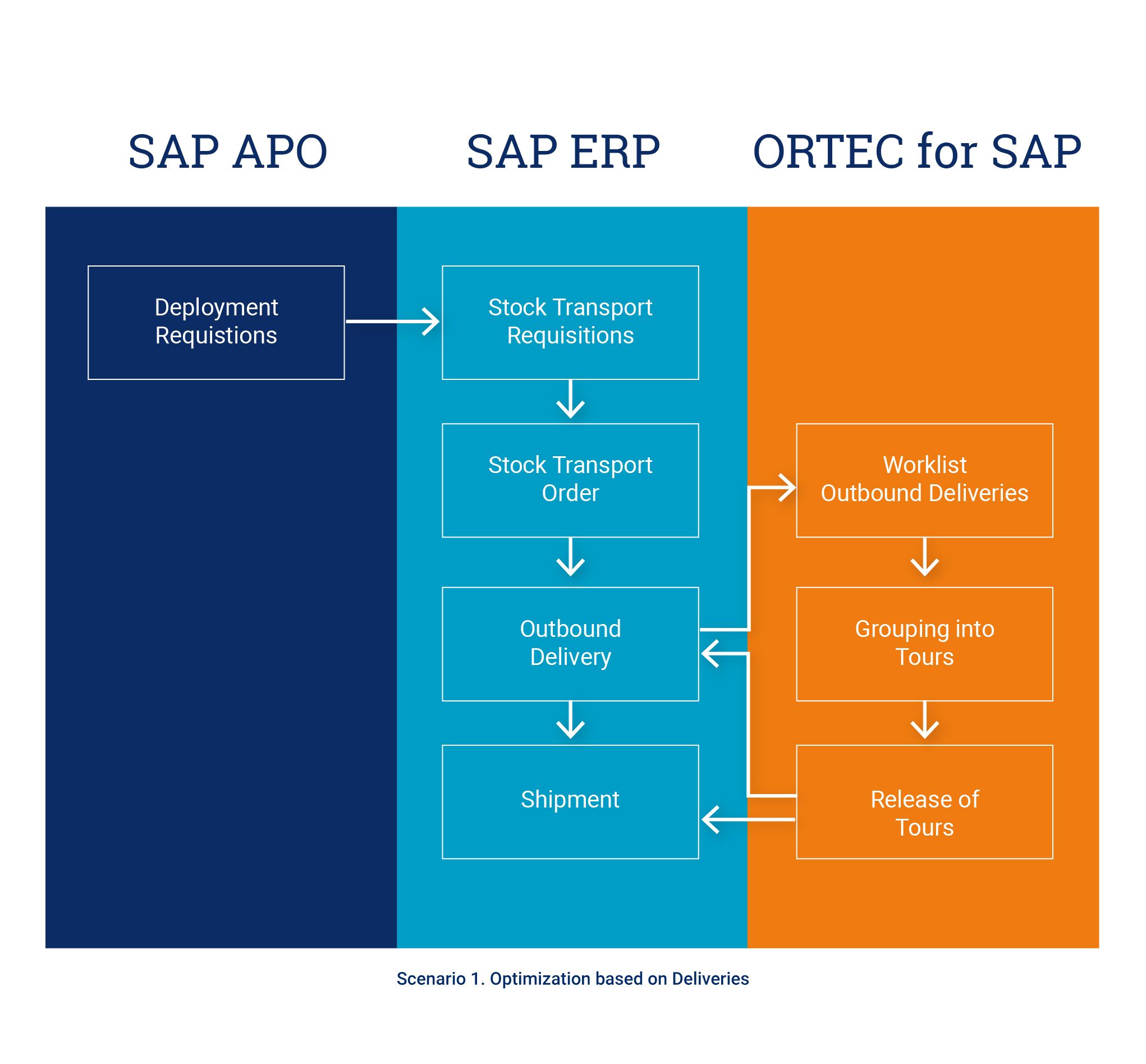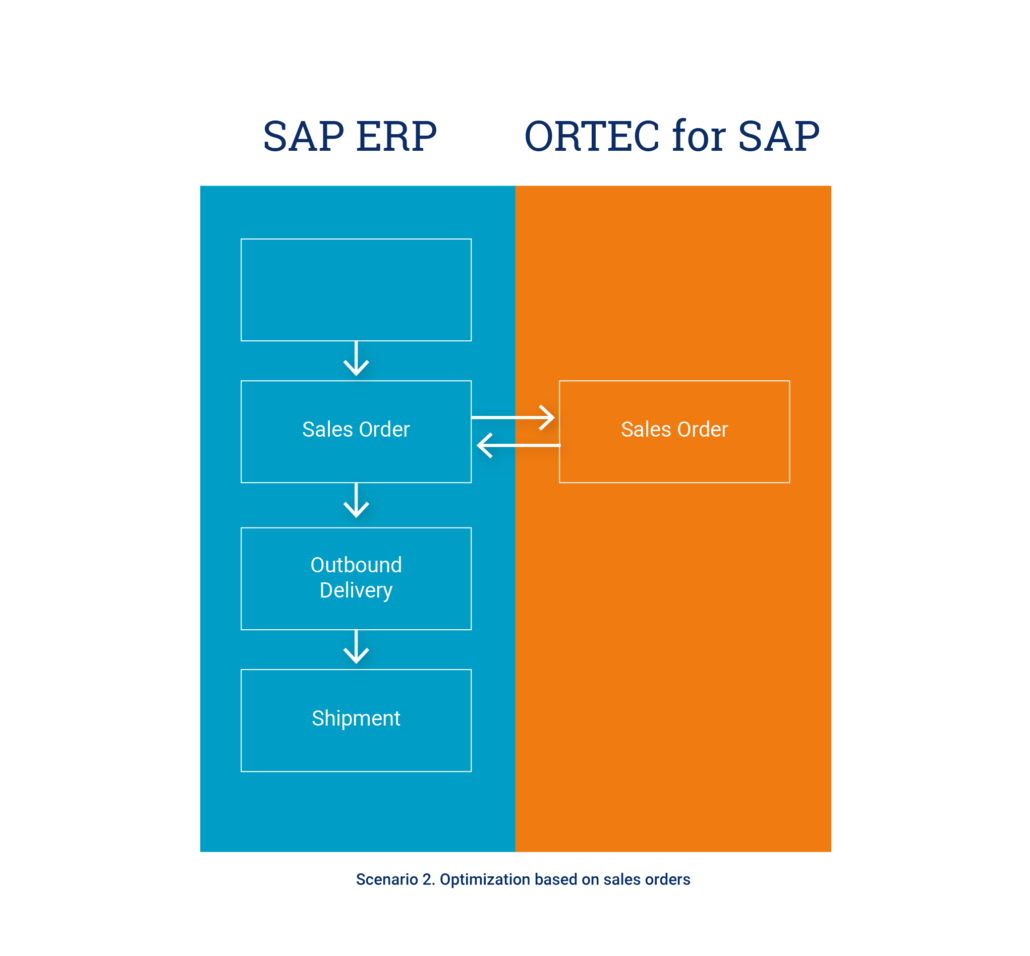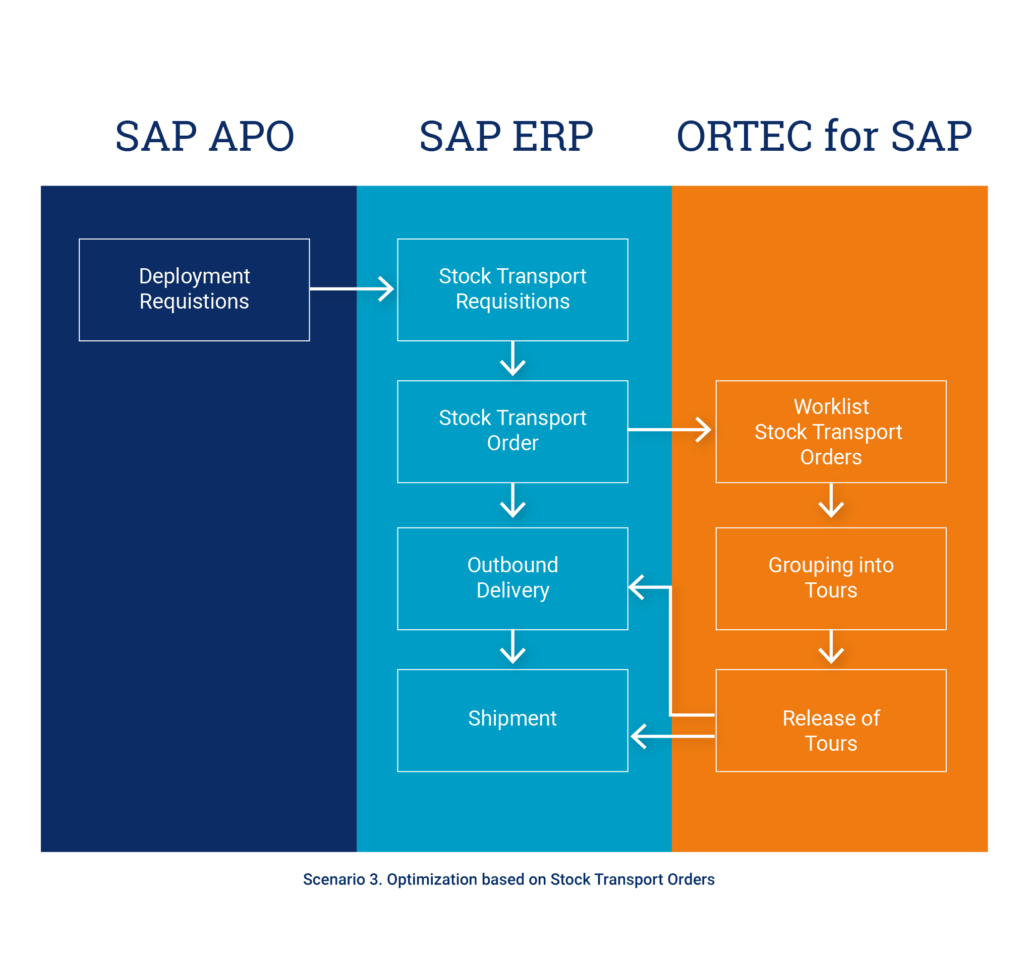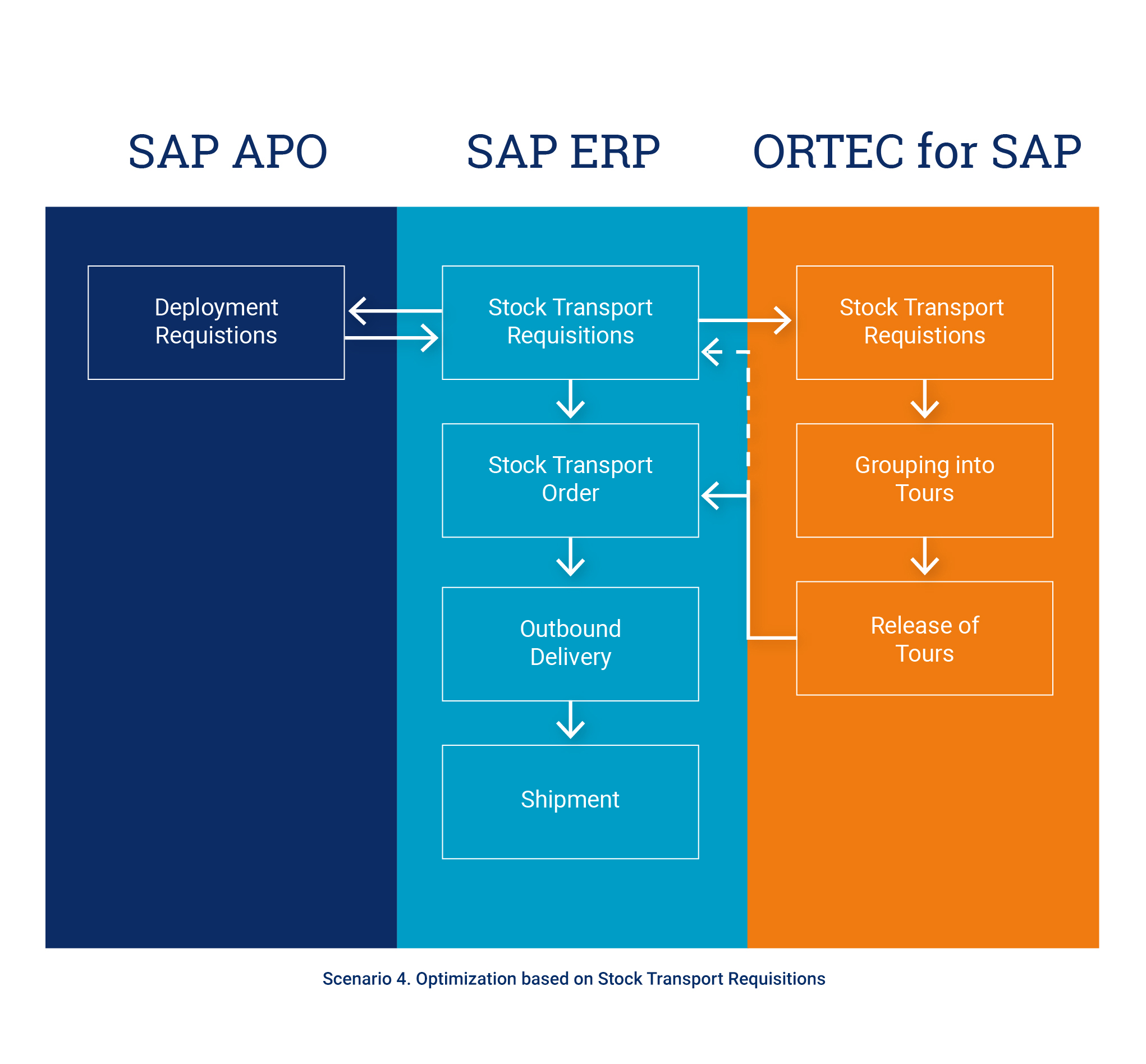SAP Transportation Management powered by ORTEC
In cases where the company uses SAP Transportation Management the scheme can look a bit different. Instead of Shipments in SAP ERP, they can create Freight Orders in SAP Transportation Management – see flow below. Similar combinations with SAP Transportation Management are viable in the other scenarios as well. SAP APO fits in this scheme as well but has been left out of the picture for clarity. See flow in figure: Scenario 3 including SAP Transportation Management.
The optimization opportunities are the same. For instance, instead of using 3 trucks for 3 deliveries, each with a load fill of 60%, you could split one delivery into 2 and use 2 trucks, each with a 90% load fill. With the advanced load building optimization features in ORTECs software for SAP, planners can assess the ideal volume and weight to use in each load combination. Combining heavy and light loads together can also contribute to cost savings.
Load building optimization for Layher
Layher, a leading provider of scaffolding systems and other construction equipment, is using this method to plan their daily transports and load containers to full capacity. Our SAP-integrated software supports Layher by enabling flexible load and pallet planning at the line item level, while taking Layher-specific loading rules into account. Transport planners can adjust the loading proposal by adding or removing line items where necessary and can decide to approve planned tours on an individual basis. 3D visualization also allows them to automatically create optimally loaded trucks. The final optimized cargo space planning are available immediately and can be easily communicated and shared.

